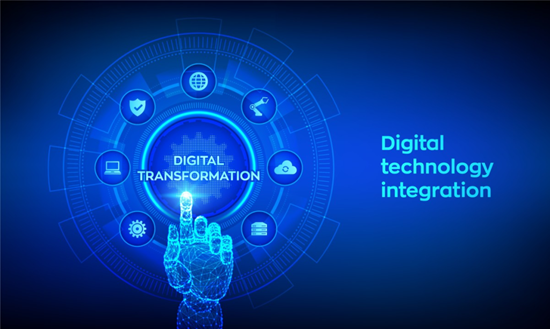In simple words, Digitisation is a taking a step from analog to digital, Digitalisation is using digital data for simplifying how we work and Digital Transformation is using technology for adding some value to every customer interaction
“Every digital transformation is going to begin and end with the customer, and I can see that in the minds of every CEO I talk to” MARC BENIOFF, CHAIRMAN & CO-CEO, SALESFORCE.
Two decades ago, before computers went mainstream most of orgs including Governments used to keep data records on paper i.e., the analog way. Photocopies, Fax, etc. were the medium if we had to access any kind of information. After computerisation, everyone started converting analog records into digital data files. This process is known as Digitisation.
Digitalisation isn’t about changing the overall business process, or creating new types of businesses. But it simply means establishing/creating a mechanism for efficient and instant access to data so that it can be used swiftly for improving performance
Digital Transformation is changing the way business gets done and, in some cases, creating entirely new classes of businesses. With digital transformation, companies are taking a step back and revisiting everything they do, from internal systems to customer interactions both online and in person. It is the process of using digital technologies to create new — or modify existing — business processes, culture, and customer experiences to meet changing business and market requirements. In other words, digital transformation begins and ends with how you think about, and engage with, customers.
Drivers of digital investments in the ecosystem of digital transformation
The Four Pillars of Digital Transformation namely “Unifying the user experience”; “Connecting digital processes”; “Delivering at digital speed”; and “Empowering the organisation” provide a structured foundation for efficiently completing an end-to-end digital transformation of the enterprise. It becomes possible to achieve large-scale change by working in small increments, rapidly delivering digital innovations as early as possible before quickly evolving them in both breadth and depth
And to achieve the above-mentioned objective efficiently completing an end-to-end digital transformation of the enterprise, companies are investing in new technologies to create new efficiencies; enhancing customer experiences and outcomes; and building new business models. New efficiencies are primary reason why large companies invest in new technologies. Enhanced customer experiences are driven in various forms, depending on how new technologies are utilised. Investing in new business models is the most difficult and least frequently targeted driver, particularly for large companies. Moving to new business models requires a cultural change that makes innovation the focus of business strategy and many companies fear cannibalisation might hamper their growth story.

Digital Enterprise: How to survive disruption and thrive in the digital age
Let’s try revisiting the scenario of when we last time went to our favorite restaurant before Covid19. Did we choose from a rich selection of menu items? Did we weigh cost versus value? Did a delicious meal arrive within a reasonable period of time? We’re betting the answer is yes, or we would have gone elsewhere
Now let’s think of our most recent experience with our company’s IT department. Were we able to choose from a varied catalogue of IT services to get the outcome we wanted? Did we pay only for the IT firepower we needed? And was the entire process, from request to completion, speedy?
If we answered yes to all those questions, that means we’re working in a company where the IT department is running like a well-oiled machine. The organisation is engaging in what we call IT as a service. When a company moves to such a service model, IT becomes standardised, consolidated, and virtualised. It offers a catalogue of software services and hardware configurations designed specifically to meet each business units’ needs. If our answer is no to any or some or all, our organisation needs to re-evolve to succeed in the digital era by disrupting not only existing business process but also need to evolve as a digital enterprise, rethinking every aspect of their business
Digital business models
Companies need to fundamentally change the way they identify, develop and launch new business ventures. A recent study forecast that 30 per cent of industry revenues will come from new business models by 2020
Digital operating models
Digital leaders follow a lean approach to both core and support functions. With this in mind, 90 per cent of companies have significantly adjusted operations in the past two years
Digital talent and skills
To attract, retain and develop talent, enterprises will need to embrace cultural change, focus on recruiting millennials and adapt to new ways of working
Digital metrics for success
Traditional key performance indicators are no longer effective at measuring the performance of a business in the digital age.

Leading enterprises track the metrics that matter, and react to them in real time.




















Comments